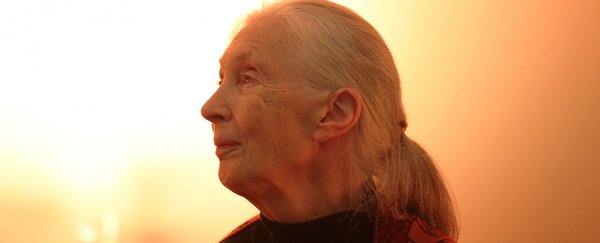Jane Goodall is an English primatologist and animal rights activist whose work advanced our understanding of chimpanzee intelligence and culture.
Having developed a strong love of animals at an early age, Goodall claimed in her own words to have been in particular inspired by stories of Tarzan. On moving to the African nation of Kenya in her 20s to stay with a school friend, she was encouraged to make contact with the esteemed palaeoanthropologist Louis Leakey, a meeting that would lead to a job as the researcher's secretary.
Goodall made her passion for wildlife - and particularly chimpanzees - clear from the start. Within a year, a grant from the United States' non-profit Wilke Family Foundation provided just enough funding for her to conduct a six-month project studying chimpanzees in Tanzania's Gombe Stream Chimpanzee Reserve.
As the study period drew to a close, Goodall made a small number of discoveries that were considered heavily controversial at the time. She observed a male she'd named David Greybeard chewing on an animal carcass, a behaviour that contrasted with the assumption chimpanzees were entirely herbivorous.
A second finding would eventually prove far more revolutionary. The same chimpanzee was later observed using a twig to 'fish' termites from a mound, establishing one of the first forms of evidence that non-human primates used tools. This inspired Leakey to later claim, "Now we must redefine tool, redefine man, or accept chimpanzees as humans."
Years of subsequent observation have since found numerous examples of tool use among chimpanzees, which are passed down through generations as a form of culture. Goodall also continued to provide evidence of active hunting by chimpanzees, complexities in forming and maintaining relationships, and a propensity for brutal intersocial conflicts.
How did Jane Goodall become so famous?
Goodall's rise to international acclaim began with a 1965 National Geographic film called Miss Goodall and the Wild Chimpanzees. The public quickly came to love this charismatic British researcher and her ability to make families of chimpanzees feel relatable. It would be just the start of a career in the public eye, with more than 40 films and numerous appearances on television making her a household name.
In 1977, Goodall made use of that fame by establishing a research institute in her name. The Jane Goodall Institute now has dozens of chapters around the world, promoting a respectful connection between animals and humans. She is also the author of numerous books on her own work and environmental protection in general.
Today, Goodall continues to travel widely for personal appearances and talks on conservation and environmental protection.
Biographical details
Born: 3 April 1934 to cabling engineer Mortimer Herbert Morris-Goodall and novelist Margaret Myfanwe 'Vanne' Joseph.
As a person: Jane initially had no formal scientific education, a deficiency that meant her early work was viewed with skepticism by other primatologists. Rather than categorise the apes she was observing with a more typical numerical system, for example, she used names and human-like terms to describe their behaviours.
Goodall's work would eventually be taken seriously by the community and the public, especially once accompanied by photographic evidence. A photographer chosen to work by her side, a Dutch baron named Hugo van Lawick, would eventually become her first husband.
All topic-based articles are determined by fact checkers to be correct and relevant at the time of publishing. Text and images may be altered, removed, or added to as an editorial decision to keep information current.
